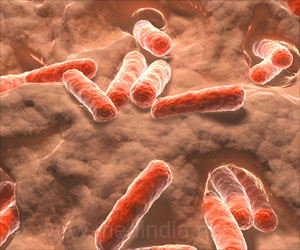Scientists have stumbled upon a major link in genetic material that throws light upon the intriguing process of aging.
Man’s quest to somehow delay the greying process continues with gusto into the 21st century. The search has been on for eons now. Youthfulness always pouts with tantalising appeal. The latest from scientists from Pittsburgh is that the secret is enmeshed in DNA. If the DNA within a living cell gets damaged, it may advance the aging process of an individual. This is especially true if the cell is too weak to help itself to rejuvenate and repair itself. This was reported in a study published in the scientific journal Nature.
"Damage occurring in the DNA can actually cause a decline in the functional ability commonly experienced as a part of the aging process, said Laura Niedernhofer, MD, PhD one of the researchers in a press release. The response to such damages by our living bodies is basically dependant on our genetic make up explained the researcher. DNA material within chromosomes, may suffer wear and tear, or get adversely affected by over exposure to harmful rays of sun, or from cigarette smoking and other metabolic causes. Therefore aging can be delayed by halting factors that have a damaging effect upon the DNA.Jan Hoeijmakers, One of Niederhofer's colleagues PhD, from Netherland had chanced upon the story of a young Afghan teenager who ha died at the age of 16. This Afghan boy suffered from a rare premature aging syndrome called progeria. The doctors that treated this boy in Germany had communicated with Jan Hoeiimakers that the Afghan boy oversensitive to sun rays and had a peculiar shriveled and aged appearance from the age of 10. Apart from this, he also had hearing disorder and partial loss of vision, inflammation of liver and also suffered from tuberculosis.
The boy died having suffered from organ failure following pneumonia at the age of 16. The boy had a peculiar mutation in a particular gene that plays a key role in the repair of damaged genes, called XPF gene.
Following these findings, Niedernhofer and colleagues replicated the studies in laboratory mice to study the aging condition. The mice were genetically engineered to study the rapid aging seen when mutation of XPF gene happens in the body. The mutant mice showed physically retardation to some extent after birth. Later on there was stunted growth after a couple of weeks. All the transgenic mice died when they were four weeks old.
The XPF gene is not the only gene that plays a role in aging or in progeria. However it does play a significant role in repairing damage that occurs in DNA regularly. Experts opine that the hidden reasons behind aging process are not so easy to unearth. However, finding the link between XPF gene and aging is momentous for those scientists who are trying to do their best to unravel a mystery that has baffled many over the past centuries.
Source-Medindia
MST






